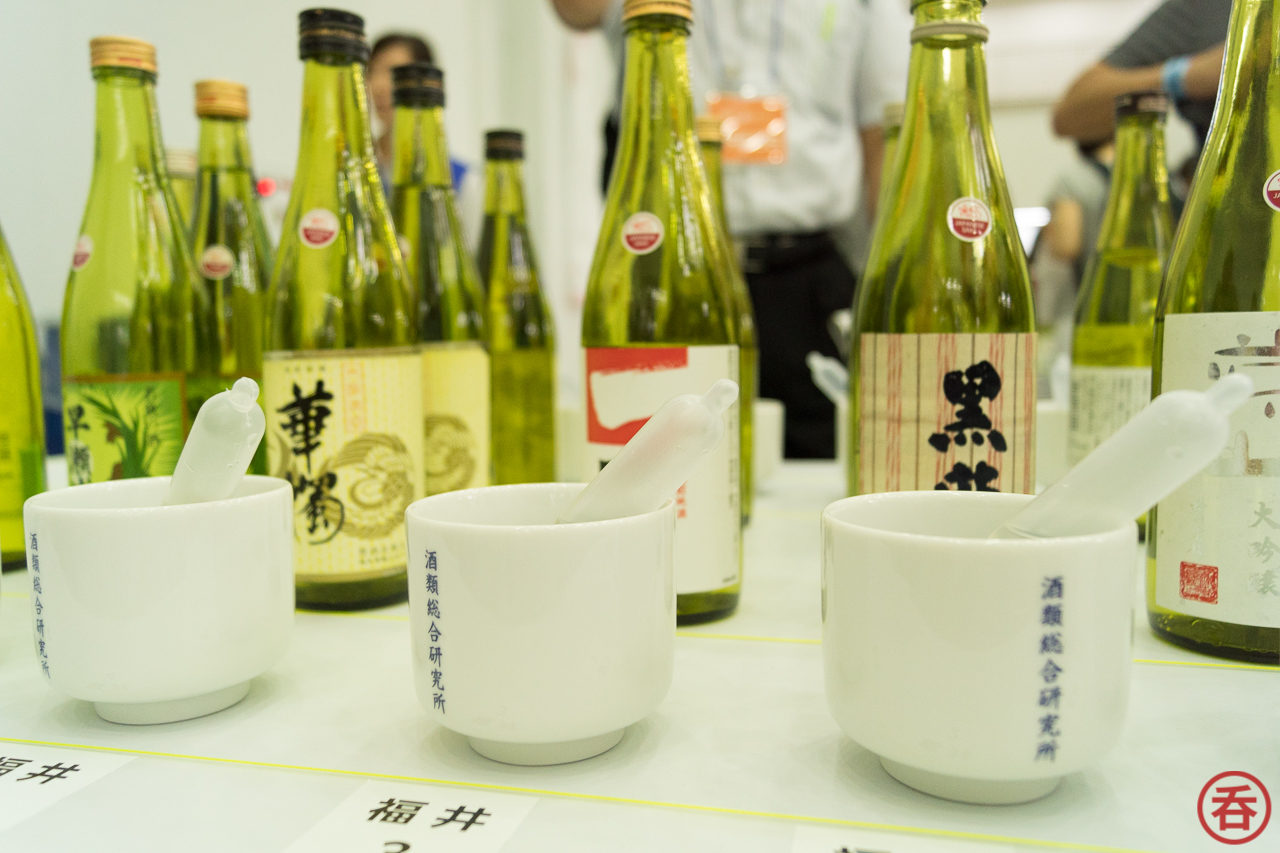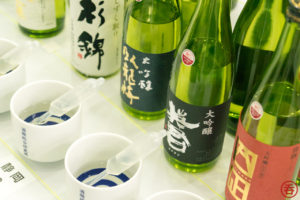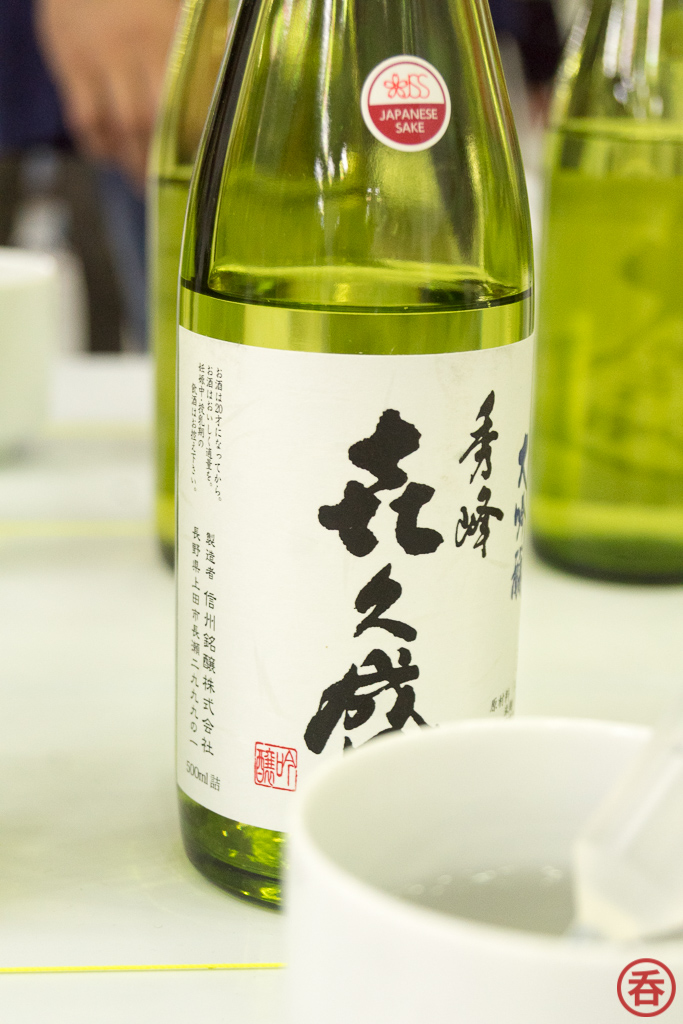Hello everyone! Many thanks to Richard for inviting me to write for nomunication on the subject of something I’m passionate about – nihonshu (日本酒) the Japanese national drink better known in English as sake. This is part one of a five-part series designed to give you a broad overview of sake and hopefully whet your thirst for more.
Before going into what sake is, I want to take a quick look at the biggest misunderstanding that affects it. I’ve heard it from so many wine or beer lovers who would otherwise be open to trying sake, and also from sake importers and bar/restaurant owners who are tired of hearing this objection from their customers.
Sake is not a spirit.
Sake is not distilled. It is not high in alcohol.
It’s brewed with yeast, in the same way as beer or wine, and its alcohol content averages 14-16%. So it’s a little stronger than wine. Anything 22% ABV or above is not considered nihonshu under Japanese law and cannot legally be called nihonshu or the alternative legal name seishu (清酒).
Where does this misunderstanding come from?
Serving size
Imagine a glass of beer, a glass of wine, and a glass of a spirit… the size is inversely proportional to the strength. The tiny cups traditionally used for sake are around the size of a shot glass, so there’s a logic to assuming sake must be strong.
The size of traditional cups plays a role in Japanese social interactions, where you make conversation and build relationships by pouring for one another. (I’ve exploited this myself, waiting for someone to drink up so I can refill and introduce myself or break into a conversation.) The smaller the cup, the more chances for interaction. There’s a different logic at play.
Not everyone means nihonshu when they say “sake”
Sake is still relatively unknown outside Japan and sometimes confused or conflated with other Asian drinks.
 The word “sake” is reasonably well known, and other Asian drinks (especially those served hot after Vietnamese or Chinese meals in Europe) are sometimes listed on the menu as sake. But they’re not nihonshu. For example, an Asian food wholesaler in Zürich (Switzerland) has a “wine” category which contains Japanese sake, umeshu (plum wine), Korean soju, Chinese wine and spirits, plus cooking wine and mirin. Anything goes, whether it’s brewed or distilled and wherever it may come from.
The word “sake” is reasonably well known, and other Asian drinks (especially those served hot after Vietnamese or Chinese meals in Europe) are sometimes listed on the menu as sake. But they’re not nihonshu. For example, an Asian food wholesaler in Zürich (Switzerland) has a “wine” category which contains Japanese sake, umeshu (plum wine), Korean soju, Chinese wine and spirits, plus cooking wine and mirin. Anything goes, whether it’s brewed or distilled and wherever it may come from.
So what is sake?
It’s a traditional Japanese alcoholic drink, brewed from rice using yeast in a process similar to beer that produces an end result closer to wine. Confused yet?
Sake is a bit like beer
Drinks made from fruit, like wine or (hard) cider, have fruit sugars readily available for yeast to turn into alcohol. Beer and sake are made from grains, so they need an extra step where the grain carbohydrates are turned into sugar. Beer gets around the problem by malting (sprouting the grains), releasing enzymes that create sugars intended to fuel the growth of a new plant.
Sake doesn’t follow the same process – mainly because the rice is almost always polished, which removes the outer coat and makes sprouting impossible. Instead, brewers use a domesticated microorganism called koji (Aspergillus oryzae if you’re being formal) to break the carbohydrates in rice down into sugars, producing sweetness and a range of other characteristic flavours. This process is the base for many traditional Japanese ingredients such as miso, soy sauce and mirin (cooking wine).
 Beer brewing is a sequential two-stage process: grains are first malted to generate sugar, which is then fermented with yeast to produce alcohol. Sake does it all at once, with the koji in the fermenting mash continually breaking down carbohydrates from rice to produce sugar for the yeast. This is one reason why sake ends up with a slightly higher alcohol level.
Beer brewing is a sequential two-stage process: grains are first malted to generate sugar, which is then fermented with yeast to produce alcohol. Sake does it all at once, with the koji in the fermenting mash continually breaking down carbohydrates from rice to produce sugar for the yeast. This is one reason why sake ends up with a slightly higher alcohol level.
Sake is a bit like wine
You probably guessed this, as sake is often called “rice wine” and is increasingly turning up at wine competitions. Sake is different from wine in a few significant ways, such as sweetness and dryness – think of the scale being shifted towards sweet for sake, with even a very dry sake not as dry as a dry wine.
Another difference is umami, the savoury “fifth taste” prevalent in traditional Japanese food. In sake umami comes from the rice, where proteins are broken down by our friend koji into amino acids. You can expect a certain amount of savouriness in sake depending on its classification. This aspect of its flavour profile lets it pair beautifully with a wide range of foods, including some difficult to pair with wine.
What was that about classifications? I’ll give you all the details in the next article. I hope that for now you’re intrigued enough to keep reading!
If you have any questions or comments, please leave them below!

Based in Zurich, Switzerland, Arline is a professional Japanese to English translator and founder of taste-translation.com. She holds a trio of sake certifications: Wine and Spirits Educational Trust (WSET) Level 3 Award in Sake, Sake Service Institute International Kikizake-shi, and Sake Educational Council Certified Sake Professional.


Enjoyable read and easy to understand. Thanks